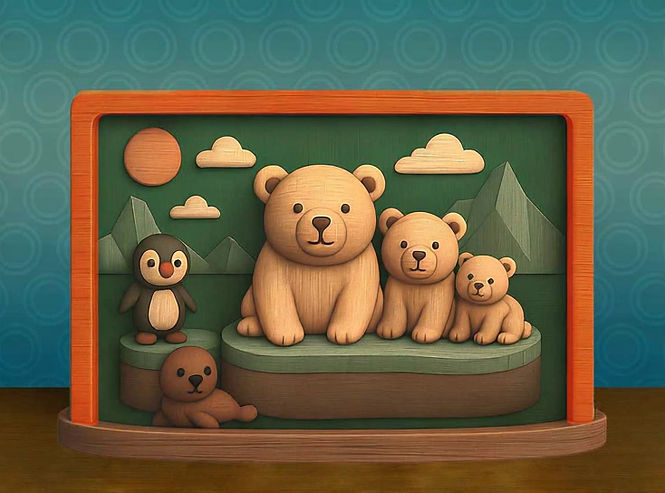UI, art direction, design
AI's & 'WOODLINGS'
A CASE STUDY
I had an idea: to create toys made out of wood. This case study explores the project of launching an e-commerce brand based on this concept, named 'Woodlings,'.
My primary objective was to utilize AI for various creative tasks, including generating the logo, visualizing product imagery, videos, designing the homepage, and detailing a product page.
Through this process, I intended to evaluate how effectively the AI followed initial prompts, its flexibility in incorporating creative direction and edits, and the speed at which it could produce high-quality, usable assets.
IMAGES & VIDEOS
I used GPT and Image Generator Pro to generate the necessary static images for the site. For video content, particularly for dynamic elements like the hero, Pollo.ai was my go-to tool.








LOGO, PATTERNS & COLOR PALETTE
For the logo, I utilized Gemini to generate diverse design concepts, aiming for a playful, wooden-toy aesthetic for 'Woodlings.'
For the patterns and color palette, GPT helped establish the whimsical and bold visual backdrop by suggesting a range of pattern ideas and a complementary color scheme.


#E64926
#FF6B2A
#31589C
#269DBD
#008757
#56AC49
#EF4D62
#FE8795
#FFBA1C

WHERE WONDER GROWS
WEBSITE
GPT proved helpful for generating various content pieces and providing additional images.
However, for the core design of the Home Page and Product Detail Page (PDP), I decided to take the reins. Despite several attempts, the AI's generated layouts for these pages didn't quite match the specific vision I had in mind.
HOME PAGE


PDP


FINAL THOUGHTS
This case study explored using AI for the 'Woodlings' e-commerce brand, evaluating its performance across design tasks.
-
Positive Impact: AI served as a powerful ideation partner, offering strong concepts and saving an estimated three weeks of work.
-
Challenges in Control: Across all generative AI tools used (GPT, Gemini, image generators, Pollo.ai), consistent issues emerged:
-
Frequent prompt repetition was needed; AI often added/removed unrequested scene elements.
-
Edits lacked nuanced understanding; when questioned about unexpected changes, AI's response was often an apology reiterating the original prompt.
-
Generated images frequently required significant post-processing for color and contrast.
-
Ultimately, while AI significantly accelerated initial conceptualization and asset generation, achieving precise design and final assets demanded considerable human oversight and direct intervention. This experience highlights AI's role as a powerful collaborator, but emphasizes that human creative control remains essential.
KEY FINDINGS